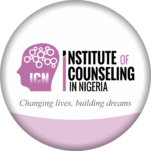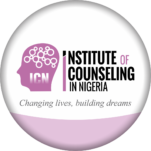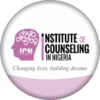Obsessive-compulsive disorder (OCD) is one of the least recognized and reported disorders in Africa and in Nigeria. However, it is common. OCD is a psychological disorder that is characterized by obsessions and compulsions. An obsession is a recurrent or uncomfortable idea, mental image, or impulse that generates anxiety or emotional distress. A compulsion is an action performed repeatedly in response to an obsession in order to reduce anxiety/stress or to prevent an ugly or fearful event from happening (APA, 2000). Examples of obsessions could include fear that you might get contaminated by touching something that’s been touched by others; embarrassing or unpleasant sexual images, and locking the door. While compulsive behaviour could include hand-washing until their skin becomes raw, checking the doors to make sure they’re closed, repeating a phrase or word (like sin confession under the breath), and keeping track of certain patterns.
Obsessive-compulsive disorder is characterized by both compulsions and obsessions. However, it’s also possible to have only one or both of these symptoms. Sometimes the individual with this disorder may not know that their obsessions and compulsions are unrealistic and excessive, notwithstanding they can be so extreme that they interfere with one’s daily work and social life. OCD is prevalent in Africa as well as in other parts of the world (Opakunle et al., 2017). A particular study reported a 28.3% prevalence of OCD-related symptoms among students (Uwakwe, 2006). While another study conducted among persons with schizophrenia reported a 54.3% prevalence rate (Opakunle et al., 2017).
OCD and Health/wellbeing
OCD has adverse effects on individuals’ health and well-being. It has been shown that the disorder is associated with depressive symptoms; and a high level of stress for the sufferers (Torres, 2016). Obsessive-compulsive disorder (OCD) has been linked to an increased risk of suicidal behaviours (Huz, 2016). It also has been shown that individuals with this condition are prone to developing lower levels of self-esteem (Husain, 2014). There is also a link between anxiety disorders and the development of this condition (Jakubovski, 2013).
Subtypes of OCD
Some of the subtypes of OCD include
Violent or Sexual Obsessions – this subtype is characterized by thoughts about killing or hurting others intentionally; and thoughts about committing sexual acts in unacceptable ways.
Contamination Obsessions – this subtype is characterized by a person experiencing intense thoughts about being infected or spreading a disease. Contrary to popular opinion, contaminating objects is not just limited to viruses and germs but can also include various bodily fluids and chemicals. Some examples include urine, saliva, blood, and vomit. It can also include household chemicals, radioactive substances, and broken glass (International OCD Foundation, 2000).
Sexual orientation obsessions – this is characterized by people having doubts about their sexual orientation. They might also fear that people might think they are gay or lesbian.
Relationship Obsessions – this is characterized by recurrent concern with one’s romantic or intimate relationship. Individuals with this condition may feel anxious or worried about their partners. They may also feel that they need to end their relationship or that their partner is not right for them.
Sensorimotor Obsessions – people with this subtype often try to shift their attention away from the task at hand to avoid becoming stuck.
Risk Factors
The risk factors for the onset of OCD could include genes, personality type, the structure of the brain, and the environment (National Institute of Mental Health, 2022).
Genes – it appears that OCD is inherited in some way. Family and twin studies have shown that individuals with first-degree relatives with Obsessive-Compulsive Disorder (OCD) are more prone to developing the condition themselves. However, there are more studies going on to bring clarity to that.
Personality – Individuals with high levels of personal standards are more prone to developing the obsessive-compulsive disorder. In addition, people who have a high level of anxiety may be at risk
The structure of the brain – individuals’ brain structure may predispose them to develop OCD. Studies have shown that individuals with obsessive-compulsive disorder have different structures and regions of the brain that are related to their symptoms. However, it is not clear if this connection is causal.
The environment – obsessive-compulsive disorder tends to be common among victims of abuse, neglect, and bullying. It can start after a life-changing event such as a bereavement or childbirth.
Treatment
The treatment approaches are psychotherapy and medication.
Psychotherapy – more often involves the use of cognitive behavioural techniques targeted at correcting the individual’s distorted thinking pattern (obsessions) and maladaptive behaviour (compulsions).
Medication – in an extreme case, medication could be applied.
Obsessive-compulsive disorder (OCD)is a psychological disorder characterized by obsessions and compulsions. There are several subtypes of OCD and the risk factors for their onset could be genetic, personality types, brain structure or environmental. Psychotherapy is an effective treatment approach; while medication could be used in some extreme cases.
References
American Psychiatry Association. (2000). Diagnostic and Statistical Manual of Mental Disorders, Text Revision.: American Psychiatry Association;
Husain N, Chaudhry I, Raza-ur-Rehman, Ahmed GR. (2014). Self-esteem and obsessive-compulsive disorder. J Pak Med Assoc;64:64-8
Huz I, Nyer M, Dickson C, Farabaugh A, Alpert J, Fava M, et al. (2016).Obsessive-compulsive symptoms as a risk factor for suicidality in U.S. college students. J Adolesc Health;58:481-4
Jakubovski E, Diniz JB, Valerio C, Fossaluza V, Belotto-Silva C, Gorenstein C, et al. (2013). Clinical predictors of long-term outcome in obsessive-compulsive disorder. Depress Anxiety;30:763-72.
Opakunle T, Aloba O, Opakunle O, Oyewole A, Osokoya O. (2017). Prevalence and correlates of obsessive–compulsive symptoms in a sample of undergraduate clinical medical students in Osogbo, Southwestern Nigeria. Niger J Health Sci [serial online] 2017 [cited 2022 Apr 30];17:66-71. Available from: https://www.chs-journal.com/text.asp?2017/17/2/66/272038
Opakunle, T., Akinsulore, A., Aloba, O. O., & Fatoye, F. O. (2017). Obsessive–compulsive symptoms in schizophrenia: prevalence and associated factors in a Nigerian population. International Journal of Psychiatry in Clinical Practice, 21(3), 195-200.
Torres AR, Cruz BL, Vicentini HC, Lima MC, Ramos-Cerqueira AT. (2016). Obsessive-compulsive symptoms in medical students: Prevalence, severity, and correlates. Acad Psychiatry;40:46-54.
Uwakwe R. (2006). Obsessive – Compulsive symptoms in a sample of Nigerian undergraduate students: Comparison with two instruments. J Biomed Investig 2006;4:1-8
Williams MT. (2008). Homosexuality anxiety: A misunderstood form of OCD. In: Sebeki LV, editor. Leading-Edge Health Education Issues. Nova Science Publishers; New York: pp. 195–205. [Google Scholar] [Ref list]




One Response
Nice post